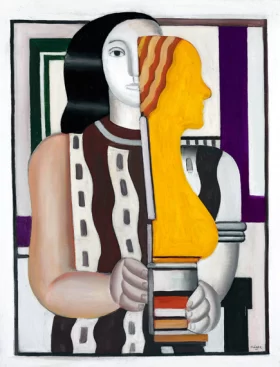5% Off Sitewide | Use code KMUS5 on checkout
- Choose your Country
5% Off Sitewide | Use code KMUS5 on checkout
Constructivism
Constructivism was an artistic and architectural movement that originated in Russia from 1919 onward which rejected the idea of “art for art’s sake” in favour of art as a practice directed towards social purposes. Constructivism as an active force lasted until around 1934, having a great deal of effect on developments in the art of the Weimar Republic and elsewhere, before being replaced by Socialist Realism. Its motifs have sporadically recurred in other art movements since.
The term Construction Art was first used as a derisive term by Kazimir Malevich to describe the work of Alexander Rodchenko in 1917 .Constructivism first appears as a positive term in Naum Gabo’s Realistic Manifesto of 1920. Alexei Gan used the word as the title of his book Constructivism, which was printed in 1922.
Constructivism was a post-World War I outgrowth of Russian Futurism, and particularly of the ‘corner-counter reliefs’ of Vladimir Tatlin, which had been exhibited in 1915. The term itself would be coined by the sculptors Antoine Pevsner and Naum Gabo, who developed an industrial, angular approach to their work, while its geometric abstraction owed something to the Suprematism of educational ministry headed by Anatoliy Vasilievich Lunacharsky who suppressed the old Petrograd Academy of Fine Arts and the Moscow School of Painting, Sculpture and Architecture in 1918. IZO, the Commissariat’s artistic bureau was run during the Russian Civil War mainly by Futurists, who published the journal Art of the Commune. The focus for Constructivism in Moscow was Vkhutemas, the school for art and design established in 1919. Gabo later stated that teaching at the school was focused more on political and ideological discussion than art-making. Despite this, Gabo himself designed a radio transmitter in 1920 (and would submit a design to the Palace of the Soviets competition in 1930).
Constructivism as theory and practice derived itself from a series of debates at INKhUK (Institute of Artistic Culture) in Moscow, from 1920-22. After deposing its first chairman, Wassily Kandinsky for his ‘mysticism’, The First Working Group of Constructivists (including Liubov Popova, Alexander Vesnin, Rodchenko, Varvara Stepanova, and the theorists Alexei Gan, Boris Arvatov and Osip Brik) would arrive at a definition of Constructivism as the combination of faktura: the particular material properties of the object, and tektonika, its spatial presence. Initially the Constructivists worked on three-dimensional constructions as a first step to participation in industry: the OBMOKhU (Society of Young Artists) exhibition showed these three dimensional compositions, by Rodchenko, Stepanova, Karl Ioganson and the Stenberg Brothers. Later the definition would be extended to designs for two-dimensional works such as books or posters, with montage and factography becoming important concepts.
In 1921, a New Economic Policy was set in place in the Soviet Union, which reintroduced a limited state capitalism into the Soviet economy. Rodchenko, Stepanova, and others made advertising for the co-operatives that were now in competition with commercial businesses. The poet-artist Vladimir Mayakovsky and Rodchenko worked together and called themselves “advertising constructors”. Together they designed eye-catching images featuring bright colours, geometric shapes, and bold lettering. The lettering of most of these designs was intended to create a reaction, and function on emotional and substantive levels – most were designed for the state-run department store Mosselprom in Moscow, for pacifiers, cooking oil, beer and other quotidian products, with Mayakovsky claiming that his ‘nowhere else but Mosselprom’ verse was one of the best he ever wrote.
In addition, several artists tried to work in clothes design with varying levels of success: Varvara Stepanova designed dresses with bright, geometric patterns that were mass-produced, although workers’ overalls by Tatlin and Rodchenko never achieved this and remained prototypes. The painter and designer Liubov Popova designed a kind of Constructivist flapper dress before her early death in 1924, the plans for which were published in the journal LEF. In these works Constructivists showed a willingness to involve themselves in fashion and the mass market, which they tried to balance with their Communist beliefs.
A number of Constructivists would teach or lecture at the Bauhaus, and some of the VKhUTEMAS teaching methods were taken up and developed there. Gabo established a version of Constructivism in England in the 1930s and 1940s that was taken up by architects, designers and artists after World War II (see Victor Pasmore), and John McHale. Joaquin Torres Garcia and Manuel Rendon were instrumental in spreading the Constructivist Movement throughout Europe and Latin America. The Constructivist Movement had an enormous impact on the modern masters of Latin America such as: Carlos Merida, Enrique Tabara, Anibal Villacis, Theo Constante, Oswaldo Viteri, Estuardo Maldonado, Luis Molinari, Carlos Catasse, and Oscar Niemeyer, to name just a few. There have also been disciples in Australia, the painter George Johnson being the most widely known. See also Constructivist architecture on the architectural avantgarde of the 1920s and 30s in the USSR.
In the 1980s graphic designer Neville Brody used styles based on Constructivist posters that sparked a revival of popular interest. Also in the 1980s designer Ian Anderson founded The Designers Republic, a very successful and influential design company which draws heavily on constructivism.
Read moreShowing 1–100 of 387 results

Étude Pour ‘La Femme en Bleu
By Fernand LegerSizes starting at $289.00
Contraste de formes
By Fernand LegerSizes starting at $279.00
Le grand déjeuner
By Fernand LegerSizes starting at $309.00
Le corsage rouge
By Fernand LegerSizes starting at $319.00
La Partie de Campagne
By Fernand LegerSizes starting at $309.00
Nature Morte
By Fernand LegerSizes starting at $279.00
Nature morte aux éléments mécaniques
By Fernand LegerSizes starting at $299.00
La Tasse de thé
By Fernand LegerSizes starting at $289.00
La Roue Bleue, État définitif
By Fernand LegerSizes starting at $319.00
Deux femmes
By Fernand LegerSizes starting at $329.00
Élément Mécanique
By Fernand LegerSizes starting at $279.00
Le Campeur, 1Er État
By Fernand LegerSizes starting at $279.00
Le damier Jaune
By Fernand LegerSizes starting at $279.00
Composition, in the factory
By Fernand LegerSizes starting at $279.00
Femme portant une statuette
By Fernand LegerSizes starting at $289.00
Femme sur fond rouge, femme assise
By Fernand LegerSizes starting at $289.00
Le drapeau
By Fernand LegerSizes starting at $279.00
Les maisons dans les arbres
By Fernand LegerSizes starting at $299.00
Composition 1920
By Fernand LegerSizes starting at $279.00
Le Pont du Remorqueur
By Fernand LegerSizes starting at $309.00
Le Compotier (Nature morte)
By Fernand LegerSizes starting at $319.00
Nature morte
By Fernand LegerSizes starting at $309.00
Nature morte (Les camées)
By Fernand LegerSizes starting at $299.00
Nature morte à la clé
By Fernand LegerSizes starting at $309.00
Trois Femmes à La Table Rouge
By Fernand LegerSizes starting at $319.00
La femme et l’enfant (Mother and Child)
By Fernand LegerSizes starting at $309.00
Les deux Pêcheurs
By Fernand LegerSizes starting at $309.00
Three Women (Le Grand Déjeuner)
By Fernand LegerSizes starting at $299.00
The City
By Fernand LegerSizes starting at $299.00
The City (La Ville)
By Fernand LegerSizes starting at $289.00
Paysage animé, 1er état
By Fernand LegerSizes starting at $309.00
Les Grand Plongeurs Noirs (The Big Black Divers)
By Fernand LegerSizes starting at $289.00
La Femme en Bleu (Woman in Blue)
By Fernand LegerSizes starting at $309.00
The Three Musicians
By Fernand LegerSizes starting at $279.00
El mecánico
By Fernand LegerSizes starting at $289.00
Les Constructeurs
By Fernand LegerSizes starting at $309.00
Builders with Rope
By Fernand LegerSizes starting at $309.00
Les Fumées Sur Les Toits
By Fernand LegerSizes starting at $289.00
Les Fumeurs (The Smokers)
By Fernand LegerSizes starting at $299.00
Still Life with a Beer Mug
By Fernand LegerSizes starting at $319.00
Still Life
By Fernand LegerSizes starting at $289.00
Le moteur
By Fernand LegerSizes starting at $279.00
Les Hommes dans La Ville
By Fernand LegerSizes starting at $279.00
Les Usines
By Fernand LegerSizes starting at $289.00
Les femmes à la toilette
By Fernand LegerSizes starting at $279.00
La Femme au Miroir
By Fernand LegerSizes starting at $279.00
Man with a Cane (First State)
By Fernand LegerSizes starting at $289.00
Discs
By Fernand LegerSizes starting at $299.00
The stairway 1913
By Fernand LegerSizes starting at $279.00
Exit the Ballets Russes
By Fernand LegerSizes starting at $299.00
La femme en rouge et vert
By Fernand LegerSizes starting at $279.00
Contrast of Forms
By Fernand LegerSizes starting at $279.00
Contrast of Forms
By Fernand LegerSizes starting at $289.00
Contraste de Formes
By Fernand LegerSizes starting at $279.00
Contrast of Forms 1913
By Fernand LegerSizes starting at $279.00
The Houses in the trees
By Fernand LegerSizes starting at $299.00
Femme aux perroquets
By Fernand LegerSizes starting at $309.00
Nature Morte aux Cylindres Colorés
By Fernand LegerSizes starting at $279.00
La Femme au Fauteuil
By Fernand LegerSizes starting at $299.00
Du Village à La Forêt
By Fernand LegerSizes starting at $299.00
Contrast of Forms
By Fernand LegerSizes starting at $299.00
The Staircase (Second State)
By Fernand LegerSizes starting at $309.00
Soldiers playing cards
By Fernand LegerSizes starting at $329.00
Nature morte
By Fernand LegerSizes starting at $279.00
Nude Model in the Studio
By Fernand LegerSizes starting at $299.00
Soldier with a pipe
By Fernand LegerSizes starting at $299.00
Le Maçon ou Nature morte
By Fernand LegerSizes starting at $299.00
Composition
By Fernand LegerSizes starting at $299.00
Personnage
By Fernand LegerSizes starting at $289.00
Contraste de formes
By Fernand LegerSizes starting at $289.00
Etude pour Le Modèle nu dans l’atelier
By Fernand LegerSizes starting at $289.00
Dessin Pour “Contrastes de Formes No. 2”
By Fernand LegerSizes starting at $289.00
Deux femmes couchées
By Fernand LegerSizes starting at $289.00
Contraste de Formes
By Fernand LegerSizes starting at $299.00
Study for “Contrast of Forms”
By Fernand LegerSizes starting at $279.00
Deux figures
By Fernand LegerSizes starting at $279.00
Woman Holding a Vase
By Fernand LegerSizes starting at $309.00
Woman with a Book
By Fernand LegerSizes starting at $309.00
Three sisters
By Fernand LegerSizes starting at $279.00
Les Trois Musiciens
By Fernand LegerSizes starting at $249.00
Femme au vase
By Fernand LegerSizes starting at $289.00
Les deux soeurs
By Fernand LegerSizes starting at $269.00
Les deux soeurs
By Fernand LegerSizes starting at $309.00
Les Trois Soeurs
By Fernand LegerSizes starting at $279.00
Marie the Acrobat
By Fernand LegerSizes starting at $289.00
La Femme au Perroquet
By Fernand LegerSizes starting at $299.00
La Jeune Fille à L’échelle
By Fernand LegerSizes starting at $299.00
Étude Pour “La Partie de Campagne”
By Fernand LegerSizes starting at $289.00
Marie l’acrobate
By Fernand LegerSizes starting at $289.00
Portrait de Madame D
By Fernand LegerSizes starting at $289.00
La Joie de Vivre
By Fernand LegerSizes starting at $289.00
Big Julie
By Fernand LegerSizes starting at $289.00
Beauty is everywhere
By Fernand LegerSizes starting at $289.00
Composition aux deux perroquets
By Fernand LegerSizes starting at $279.00
Les danseuses aux clés, étude
By Fernand LegerSizes starting at $279.00
Les Perroquets (Les acrobates)
By Fernand LegerSizes starting at $299.00
The three characters
By Fernand LegerSizes starting at $259.00
Danseuses au Tronc d’arbre
By Fernand LegerSizes starting at $289.00
La Lecture
By Fernand LegerSizes starting at $289.00
La Femme aux Clés
By Fernand LegerSizes starting at $309.00




































































































